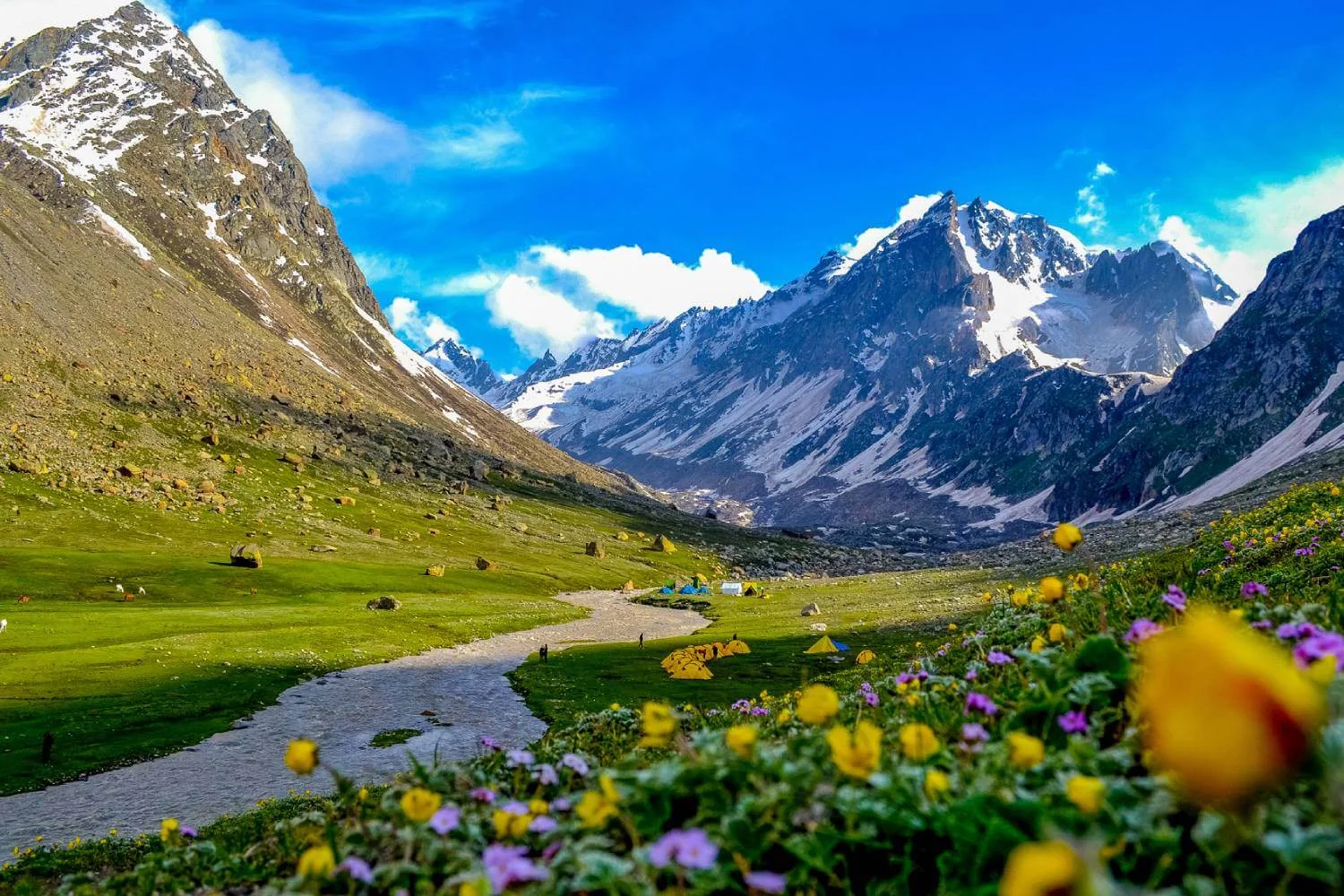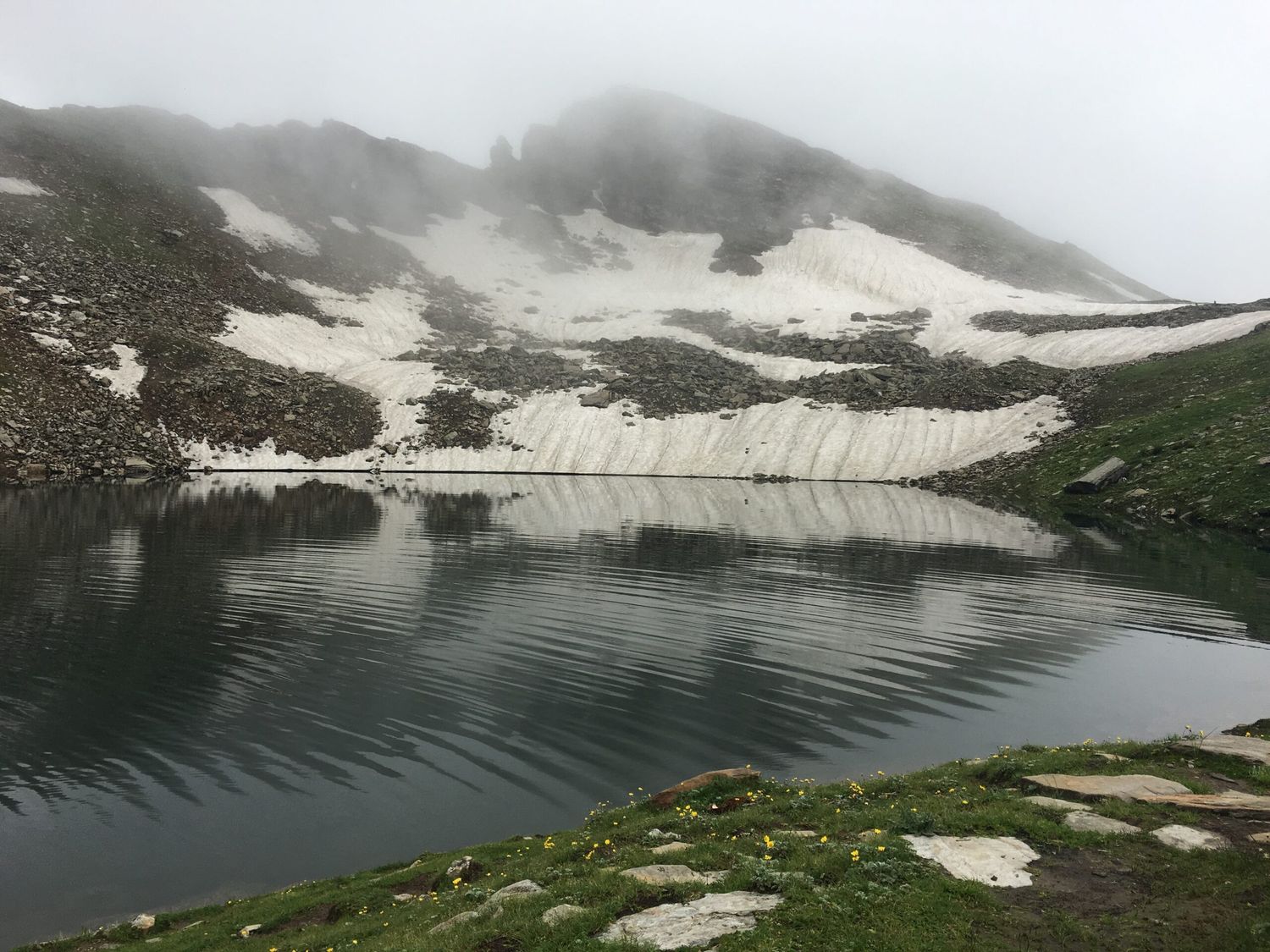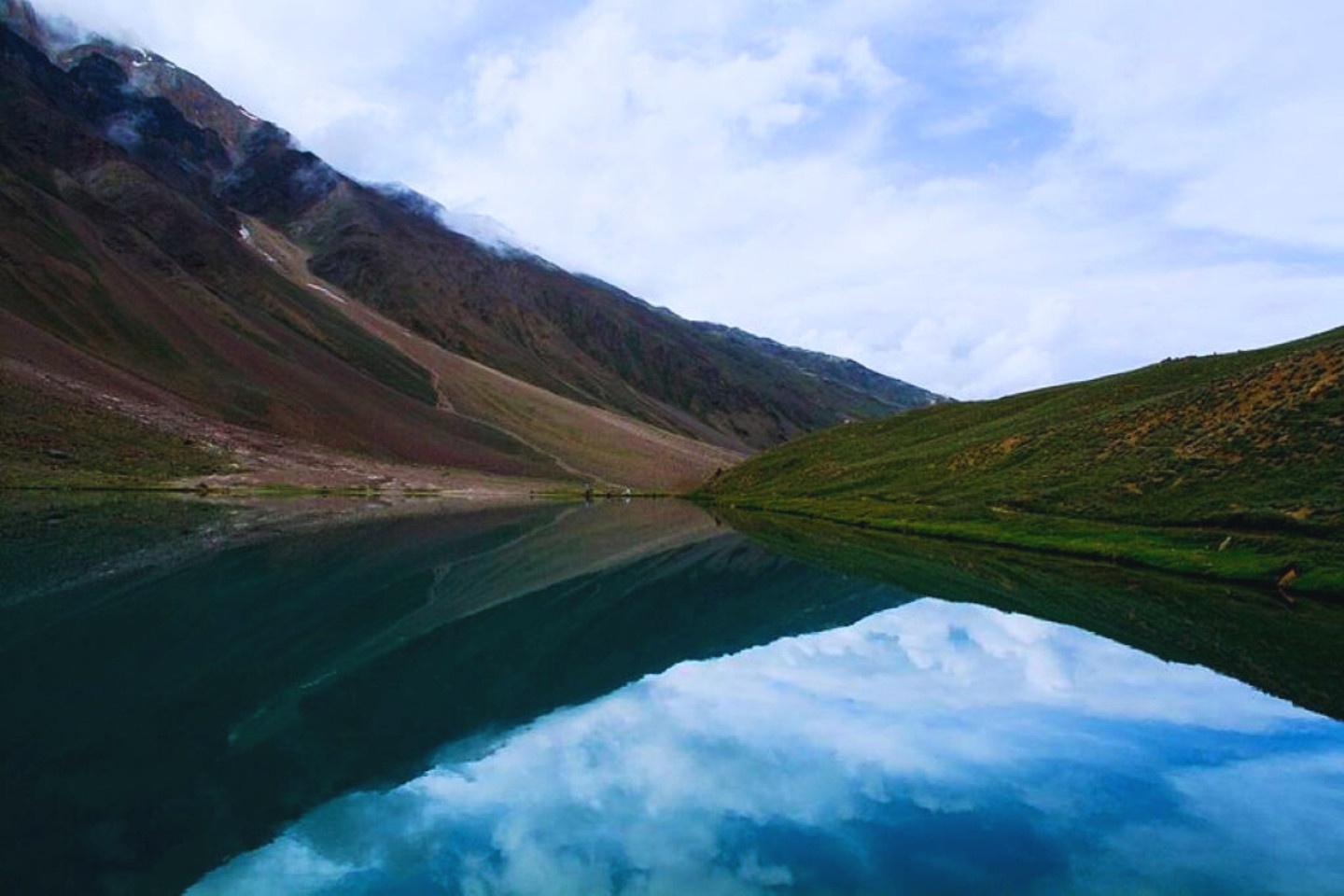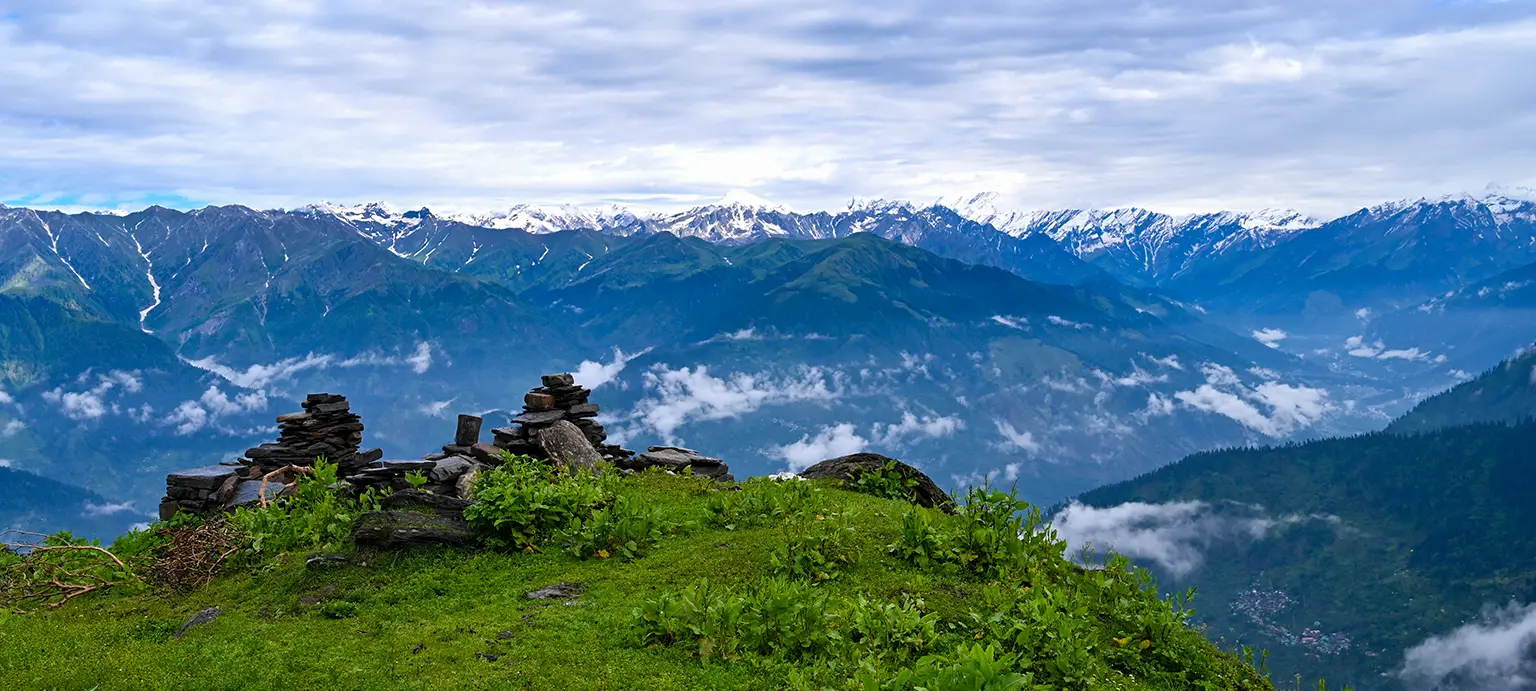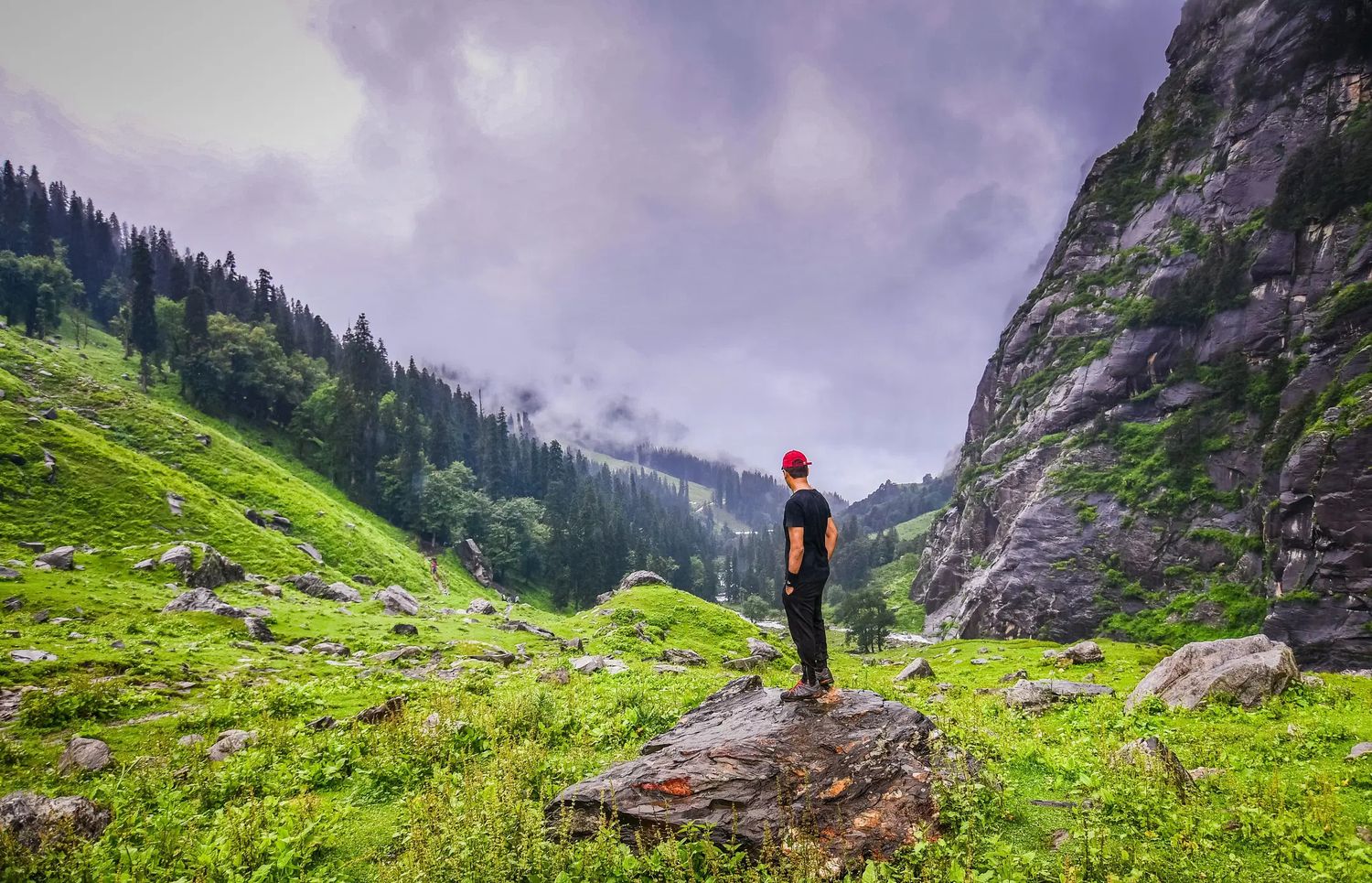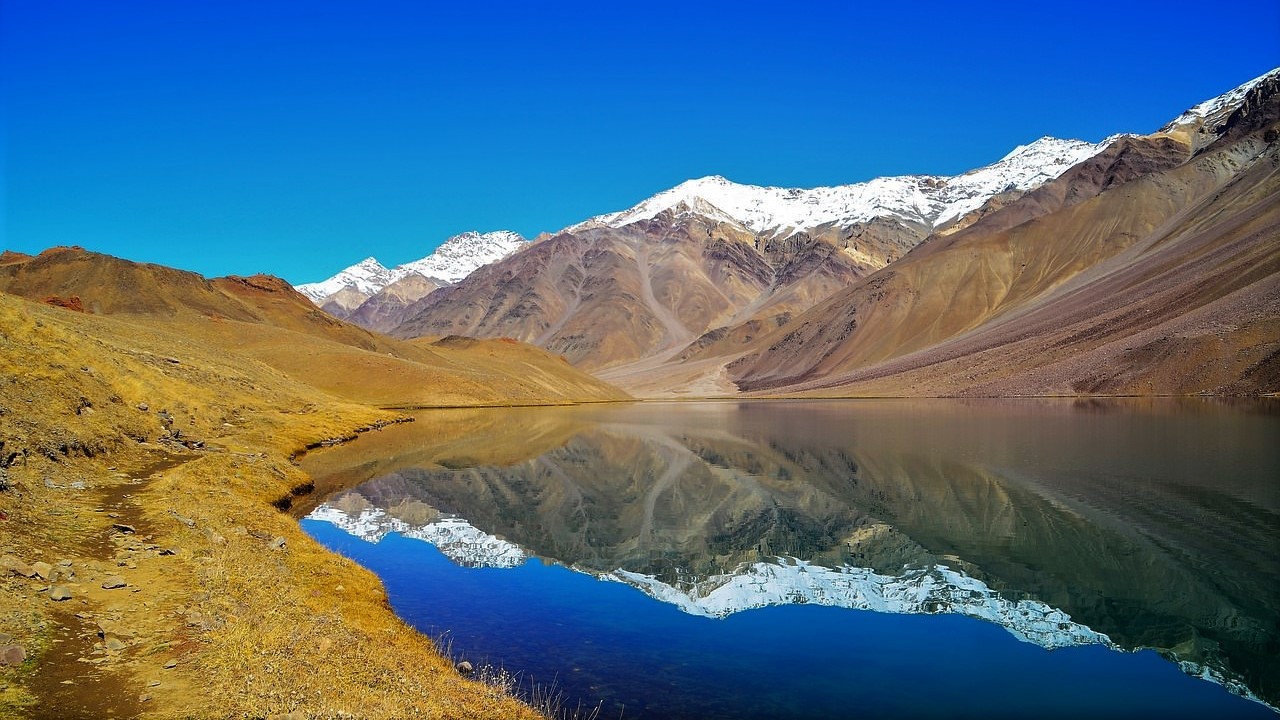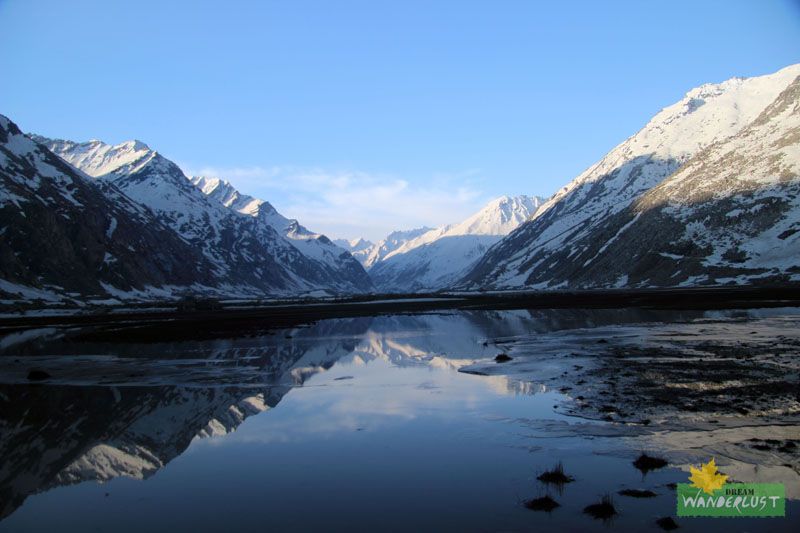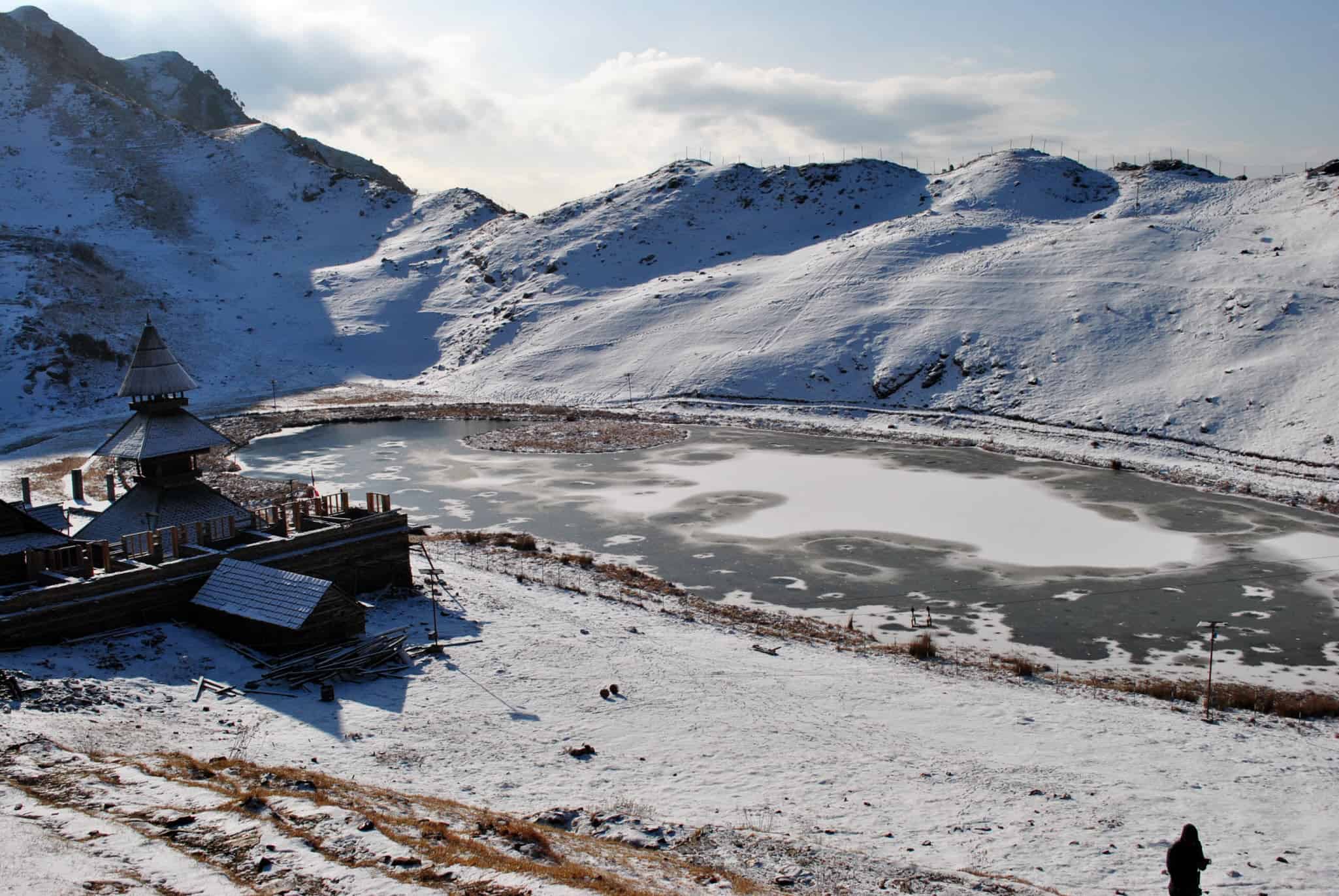Hampta Pass Trek: A Dramatic Crossover Between Worlds
The Hampta Pass Trek offers a rare, high-altitude corridor that bridges two dramatically different valleys — the lush green Kullu valley and the stark, arid Spiti valley. Known as one of the best crossover treks in India, Hampta is perfect for trekkers who want a bit of everything: forests, meadows, glaciers, river crossings, and surreal desert landscapes — all in just five days.
The Valley of Contrasts
One moment you’re walking through pine forests and wildflower meadows, and the next, you're facing barren, rocky trails that open up into Spiti’s desert-like expanse. The sheer shift in scenery after crossing Hampta Pass is jaw-dropping and unforgettable.
River Crossings and Glacier Beds
One of the highlights of Hampta is its multiple river crossings. Whether you're balancing on rocks or wading through icy streams barefoot, these crossings add thrill and grit to the experience. Trekking across snow patches and glacier beds near the pass also adds a dramatic alpine feel.
Camping at Serene High-Altitude Meadows
Campsites like Chika and Balu Ka Ghera offer breathtaking views under star-lit skies. Imagine pitching your tent next to rivers with mountains guarding you all around — it’s pure Himalayan bliss.
The Optional Detour to Chandratal
If you have an extra day, a drive to the magical Chandratal Lake from Chatru is highly recommended. This crescent-shaped lake, nestled between the mountains, reflects the skies like a mirror and feels untouched by time.
